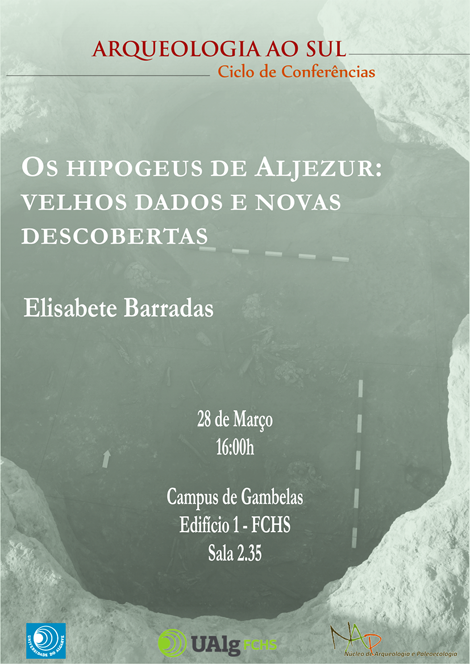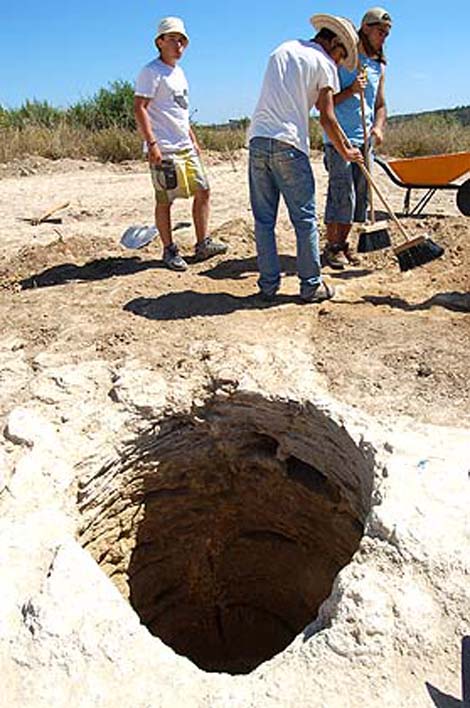 “The hypogeums of Aljezur: old data and new discoveries” is the theme of the conference by Elisabete Barradas, part of the lecture cycle Southern Archeology, which will take place on March 28, at 16 pm, in room 00 of the Faculty of Human and Social Sciences of the University of Algarve, on the Campus de Gambelas, in Faro.
“The hypogeums of Aljezur: old data and new discoveries” is the theme of the conference by Elisabete Barradas, part of the lecture cycle Southern Archeology, which will take place on March 28, at 16 pm, in room 00 of the Faculty of Human and Social Sciences of the University of Algarve, on the Campus de Gambelas, in Faro.
The cycle is promoted by the Archeology and Paleoecology Nucleus of the University of Algarve.
The hypogeums of Aljezur, a kind of underground silos dug into the limestone rock, which served to bury the dead at the end of the 4th and beginning of the 3rd millennium BC, are some of the archaeological remains found over the years in the area called Igreja Nova, in that region. county.
In the last quarter of the XNUMXth century, a collective funerary monument was identified and excavated by Estácio da Veiga, next to the Church of Nossa Senhora de Alva, in Aljezur, which he called the Tumulus Station of Aljezur.
In this tomb, osteological remains belonging to at least 30 individuals appeared and a rich and diversified estate was collected, compatible with late Neolithic/Early Chalcolithic chronologies, highlighting an important set of schist plates, in addition to other usual artefacts of this type of funerary contexts.
The monument, today most likely destroyed, would be an artificial cave dug into the rock, with an irregular plan, unparalleled in Portuguese territory, formed by six hemicycles arranged in staggered plans, according to the descriptions and drawings presented by the author in the Monumental Antiquities of the Algarve.
The excavations carried out in 2011 and 2013 at Sítio da Barrada, as part of a multi-annual research project led by Silvina Silvério, Elisabete Barradas and Maria João Dias da Silva, allowed the discovery of two hypogeums, relatively close to the place where the aforementioned sepulcher once existed.
 The Barrada hypogeum I, whose excavation is almost completed, was sealed by the collapse of the dome and has shown great scientific potential. It consists of an antechamber and a funerary chamber with an irregular plan, similar to the tomb excavated by Estácio da Veiga, and features human burials and associated funerary remains, including polished stone instruments, flint blades and geometrics, some ornamental elements (bracelet in the shell of Glycymeris sp., various stone beads), with traces related to the funerary ritual, namely the use of ocher, being preserved. Hypogeum II, although badly destroyed, has the same morphology and similar spoilage.
The Barrada hypogeum I, whose excavation is almost completed, was sealed by the collapse of the dome and has shown great scientific potential. It consists of an antechamber and a funerary chamber with an irregular plan, similar to the tomb excavated by Estácio da Veiga, and features human burials and associated funerary remains, including polished stone instruments, flint blades and geometrics, some ornamental elements (bracelet in the shell of Glycymeris sp., various stone beads), with traces related to the funerary ritual, namely the use of ocher, being preserved. Hypogeum II, although badly destroyed, has the same morphology and similar spoilage.
The aim of this communication, based on old information and data from recent excavations, is to characterize the hypogeums of Aljezur and deepen some questions related to the funerary practices of these communities that deposited their dead here at the end of the 4th and beginning of the 3rd millennium BC


















Comments